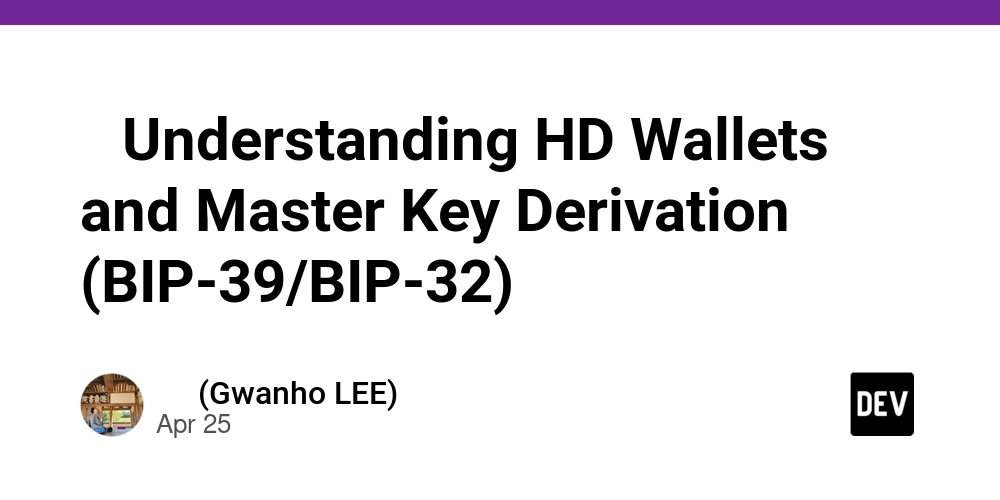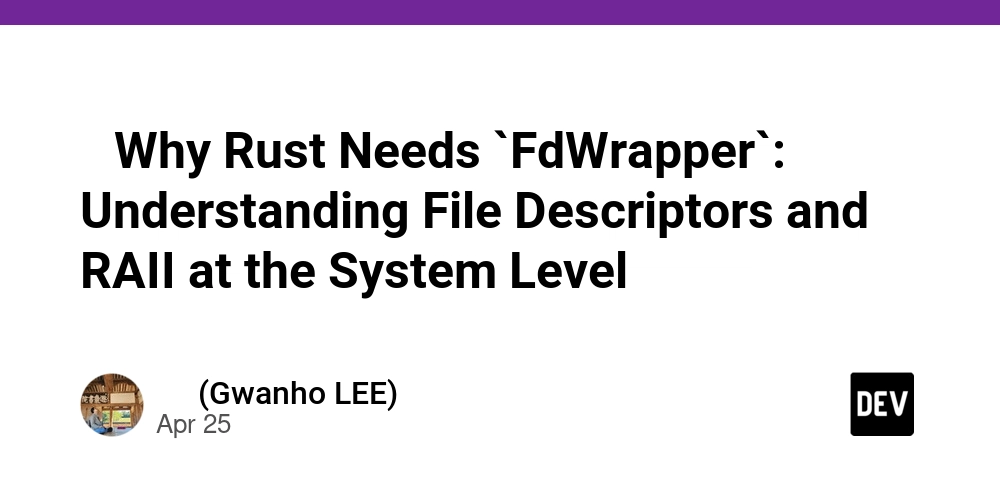이관호(Gwanho LEE) articles - 27 total
How Rust's Future Type Guarantees Scalable, Safe Asynchronous I/O
Introduction: The Problem: Briefly explain why traditional thread-per-connection models struggle...
Understanding Bitcoin Fundamentals: From Transactions to Consensus
This post is part of my deep dive into Bitcoin’s core architecture — studying directly from the...
🚀 Understanding Proof-of-Work, Block Structure, Merkle Trees, and Consensus in Bitcoin
This post is part of my study journey following the Bitcoin Developer Guide. In particular, this...
🍎 From UTXOs to SegWit: How Bitcoin Fixed Transaction Malleability and Lowered Fees
Introduction If you’re building Bitcoin or Lightning applications in Rust, understanding...
Mastering Multi-Signature Transactions in Bitcoin: Workflow, Optimizations, and Trends
Multi-signature (multisig) wallets are fundamental to securing digital assets in the blockchain...
From 404|1003 to the Green Lock: How I Fixed My Rust SMS Proxy on GCP with Caddy
TL;DR: I was calling my Rust SMS proxy on a Google Cloud VM by IP:8080, which caused Cloudflare 1003...
⚡ Lightning Network: Rust, LDK, and the Future of Bitcoin Payments
Bitcoin is powerful, but its base layer has limits: ~7 transactions per second, high fees during...
🚀 How I Added SegWit to My Rust Bitcoin Wallet (and Why You Should Too)
Why This Post? When I first built my Bitcoin CLI wallet in Rust, it worked — but it was...
🔑 Multisig vs Normal Bitcoin Transactions — What’s the Difference?
🚀 TL;DR Normal: 1 input → 1 signature. Multisig: 1 input → M signatures (from N...
Closures in Rust: `Fn`, `FnMut`, and `FnOnce`
Closures in Rust are one of its most expressive and powerful features. They allow you to create...
Understanding Multi-Signature Bitcoin Wallets
Introduction Multi-signature (multi-sig) wallets represent one of Bitcoin's most powerful...
😱Why Bitcoin Wallets Validate Public Key Hashes: A Deep Dive into Data Integrity
Introduction When building a Bitcoin wallet, one of the most critical yet often overlooked...
🦉Building a Bitcoin CLI Wallet in Rust
Building a Bitcoin CLI Wallet in Rust 🚀 Overview This project is a Rust-based Bitcoin CLI wallet,...
Understanding Async/Await in Rust: A Simple Guide
Rust, Async Programming What is Async/Await? Async/await is a way to write code that...
Bitcoin Transaction Signing: A Developer's Deep Dive
Understanding the complete process from UTXO selection to transaction broadcast Table of...
Understanding Async Socket Handling in Rust: From TCP Request to Waker Wake-up
A deep dive into how a client request flows from the OS into a Rust async server using TCP, sockets,...
📝 Implements `Box<T>` and `Vec<T>` and why?
📦 What Is Box<T> (A Smart Help Pointer)? Box<T> is a smart pointer that owns...
🌱 Understanding HD Wallets and Master Key Derivation (BIP-39/BIP-32)
When building a secure and scalable wallet application, understanding Hierarchical Deterministic (HD)...
Interior Mutability, Smart Pointers, and Tree Structures in Rust
When writing system-level code or complex data structures like trees and graphs in Rust, one...
🧵 Why Rust Needs `FdWrapper`: Understanding File Descriptors and RAII at the System Level
Rust has a reputation for being safe, efficient, and modern — but when you drop down into...
🚧 My Bitcoin Wallet Development in Rust (Testnet)
I started this project to deeply understand how Bitcoin wallets work — not just from the UI side, but...
Understanding `async`, `.await`, and `block_on()` in Rust (with Real Examples)
As a Rust systems programmer, you may often run into concepts like async, .await, and...
🔐 What Are Private Keys and Public Keys in Crypto?
While developing a wallet application, I realized it's essential to have a solid understanding of how...
🧠 Why Wallet Applications Use Multiple Bitcoin Addresses
A Developer's Guide to Change Addresses & HD Wallets 📌 Introduction As I'm...
How Bitcoin Transactions Work
Let’s break down how Bitcoin transactions work using two simple terms: scriptPubKey = locks BTC to...
Implementing a Slab Allocator in Rust
🧠 Implementing a Slab Allocator in Rust A slab allocator is a memory management technique...
Deep Dive: How Bitcoin Transactions Work Under the Hood🚀
As a Rust blockchain developer on a mission to build secure, low-level systems, I recently took a...




























